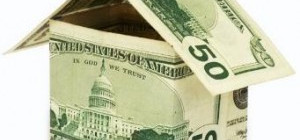The fallout from the 2007-08 mortgage collapse continues to rear its ugly head some five years later. Kareem Serageldin, a former executive for Credit Suisse, pleaded guilty on April 12 to fraud after admitting to artificially inflating the value of mortgage bonds in 2007, in an attempt to mask the free-falling subprime market. Home values had been on a continual plunge from 2008 until last June, when prices rose for the first time in nearly five years. But now since last summer, home values have continued rising, with some markets (i.e. Phoenix) experiencing 30 percent year-to-year increases. Wealthy investors are paying cash for homes in some markets and turning them into rentals, which shrinks inventory and subsequently raises prices.
This perceived housing recovery hasn’t trickled down to first-time home buyers, nor to those who wish to refinance. There are several reasons for this, but it mostly comes down to underwriting guidelines for lenders.
Credit Now and Then
The benchmark 30-year fixed mortgage rate fell to 3.64 percent on April 10, down from 3.73 percent the previous week, according to Bankrate.com. The rate was 4.11 percent one year earlier. The 15-year benchmark rate fell to 2.89 percent, from 2.95 percent the previous week. First-time home buyers and those wanting to take out a second mortgage will surely love taking advantage of these rates, but lending institutions are making it extremely difficult on them.
Underwriters are not only requiring extensive documentation of assets, income and employment, but also are demanding high credit scores. A 740 score and 20 percent down payment are the minimum requirements for a borrower to receive the best possible rate, according to a Wall Street Journal report. Elizabeth Duke, a Federal Reserve governor, said credit restrictions are easing for individuals applying for American Express cards, personal loans and auto loans, but not in the mortgage sector. Duke, according to Bloomberg, said banks want higher interest rates so they can make more of a profit, but that cannot happen until the economy recovers further. Rates can rise if the Fed stops its $85 billion monthly quantitative easing program. But all signs point to the mortgage-backed securities and treasurys purchase program continuing through at least the end of the year.
New Rules for 2014
The Consumer Financial Protection Bureau (CFPB) met its January 21, 2013 deadline to issue a new set of mortgage rules meant to clean up some of the industry’s troubles. The new rules, set to take effect in January 2014, include an “ability to repay” provision. This will require lenders to make diligent efforts in determining the credit worthiness of potential borrowers and eliminate “teaser” rates that come with adjustable-rate mortgages. There are several more pro-consumer rules that will add safeguards addressing escrow accounts, appraisals and origination fees.
What This Means for Buyers
Locking in an interest rate at less than 4 percent is a once in a lifetime opportunity. The all-time low rate was 3.31 percent set in November 2012, according to Freddie Mac. An FHA loan, which only requires a 620 FICO score and 3.5 percent down payment, might be the best option for first-time home buyers. The one negative on FHA is that you must pay for monthly mortgage insurance. The other option is to improve your credit score until you qualify for a conventional mortgage.
Photo by Flickr user RambergMediaImages








